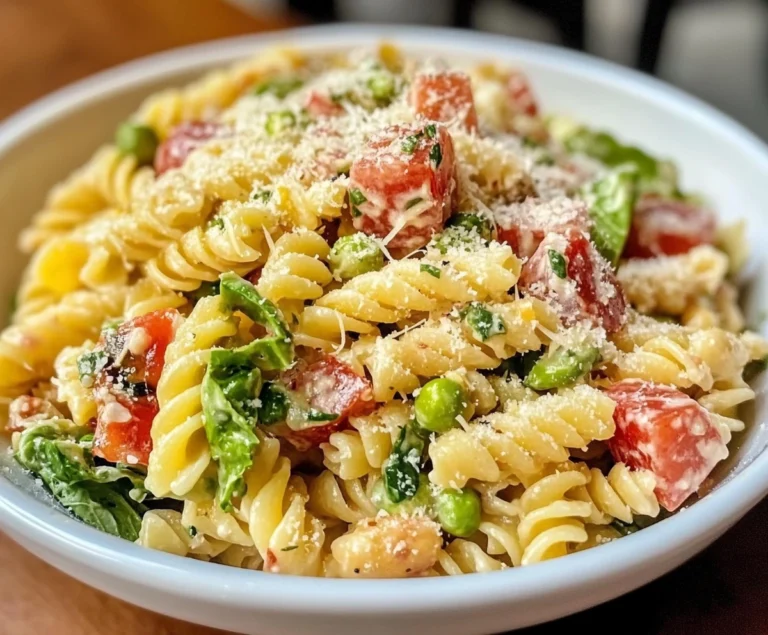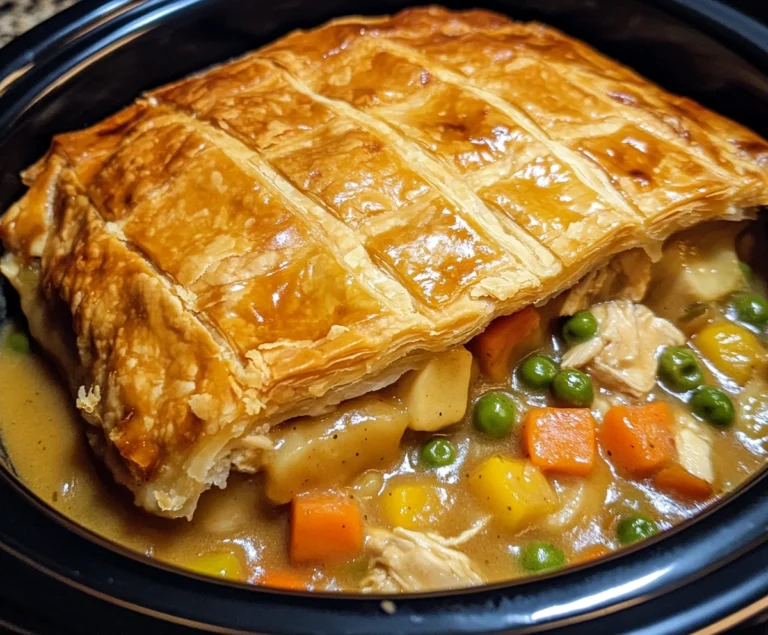How Do You Keep Lemon Cream Sauce from Breaking?
What Does It Mean When a Sauce Breaks?
Before diving into the details of how to keep your Prevent lemon cream sauce from breaking from breaking, it’s important to understand what happens when a sauce breaks. A sauce “breaks” when the fat (in this case, from the cream or butter) separates from the water or liquid (such as lemon juice or broth), leaving behind an oily layer on top and a watery pool underneath.
The separation happens because fats and liquids don’t naturally mix. When they do, it’s due to the process of emulsification—a technique where two ingredients that typically don’t blend, such as fat and water, are forced into a stable mixture. Without careful management, sauces, especially cream-based ones, can separate during cooking or even while sitting on the table.
Understanding emulsification will help you master not just lemon cream sauce but also many other creamy and buttery sauces like hollandaise, béarnaise, and Alfredo.
Science Behind Emulsification: How It Works
Emulsification is key to keeping your lemon cream sauce from breaking. In culinary terms, an emulsion is a mixture of two liquids that don’t normally combine, such as oil and water. There are two types of emulsions:
- Temporary emulsions: These require constant agitation to remain stable, like a vinaigrette.
- Permanent emulsions: These are held together with the help of an emulsifying agent, such as egg yolks, mustard, or butter.
In lemon cream sauce, the cream (fat) is emulsified with lemon juice (water-based) to create a smooth and silky sauce. Egg yolks, butter, and even mustard can help stabilize this emulsion. Without an emulsifier, the fat will naturally try to separate from the water, causing your sauce to break.
Causes of Sauce Breaking
Knowing why a sauce breaks can help you prevent it from happening in the first place. There are several common reasons why a lemon cream sauce might break, and understanding these causes can save your dish:
1. High Temperature
High heat is the number one cause of broken sauces, particularly cream-based ones. If the cream gets too hot, the fat molecules become too large, separating from the water molecules. This is especially problematic in lemon cream sauce because the cream is delicate and can quickly curdle when exposed to too much heat. Always keep the heat low to medium, and avoid boiling the sauce.
2. Acidity of Lemon Juice
The acidity in lemon juice is another major factor in the sauce breaking. Lemon juice is highly acidic, and when added to cream at the wrong time or in the wrong proportion, it can cause the cream to curdle. While lemon adds a bright, tangy flavor to the sauce, you need to incorporate it carefully.
3. Adding Ingredients Too Quickly
If you add ingredients too quickly, they may not blend properly, causing the sauce to separate. This is especially true when adding cream or lemon juice. Both should be incorporated gradually while continuously stirring to help create a stable emulsion.
4. Inadequate Mixing
A good lemon cream sauce needs continuous whisking or stirring during cooking to maintain emulsification. If the sauce is left unattended or not mixed well, it can easily separate. Stirring helps disperse the fat and liquid evenly, ensuring that the emulsion remains intact.
5. Too Much Fat
While fat is necessary for a rich sauce, too much can overwhelm the liquid in the sauce and cause it to break. If there’s too much butter or cream in proportion to the liquid components, the emulsion may not hold.
Key Ingredients in Lemon Cream Sauce and Their Role
Every ingredient in lemon cream sauce plays a critical role in determining whether the sauce will stay intact or break. Let’s take a closer look at these ingredients:
1. Lemon Juice
Lemon juice provides the signature tang and brightness in this sauce, but its high acidity can destabilize the cream. Should be added gradually, and it’s best to incorporate it after the cream has already thickened a bit to reduce the risk of curdling.
2. Heavy Cream
Heavy Prevent lemon cream sauce from breaking is the base of your sauce, providing the fat needed for a rich, luxurious texture. Cream contains both fat and water, which is why it’s essential to control the heat and emulsification process. Cream’s high fat content helps create a stable emulsion, but overheating or mixing too quickly will still cause it to break.
3. Butter
Butter serves both as a flavoring agent and an emulsifier. When whisked into the sauce, it helps blend the fat and water together. Adding butter towards the end of cooking can give the sauce extra stability, as well as a rich flavor.
4. Egg Yolks (Optional)
Some variations of Prevent lemon cream sauce from breaking, especially in recipes like hollandaise or béarnaise, call for egg yolks. Egg yolks are natural emulsifiers that help bind fats and liquids, making your sauce smoother and less prone to breaking. If you’re having trouble keeping your sauce stable, whisking in an egg yolk may solve the problem.
5. Stock or Water
Adding a small amount of water, chicken stock, or vegetable broth can balance the richness of the cream and butter. It can also help thin out the sauce if it’s too thick. Water or broth plays a crucial role in balancing the fat in the sauce, preventing it from becoming too dense.
6. Salt and Seasonings
Seasonings like salt, pepper, and garlic add flavor to the sauce. It’s best to season the sauce in stages, tasting as you go to ensure the flavor is well-balanced.
Techniques to Prevent Lemon Cream Sauce from Breaking
To achieve a perfectly smooth lemon cream sauce, it’s essential to follow specific techniques that help prevent the sauce from breaking. Here’s a detailed guide:
1. Use Low to Medium Heat
As mentioned earlier, high heat is the enemy of cream-based sauces. To prevent your sauce from breaking, cook it on low to medium heat. The goal is to slowly warm the cream and lemon juice, allowing them to blend together without curdling. Avoid bringing the sauce to a boil—once it starts bubbling, it’s likely too hot for the cream to remain stable.
2. Add Lemon Juice at the End
Because lemon juice is acidic, it should be added after the cream has thickened. When the sauce is nearly finished, take the pan off the heat and whisk in the lemon juice gradually. This helps prevent curdling and gives the lemon juice enough time to blend smoothly with the other ingredients.
3. Gradual Addition of Cream
Always add the cream slowly and in small amounts. This gradual addition allows the fat and liquid to bind without overwhelming each other. Whisk continuously as you pour the cream into the sauce, ensuring a stable emulsion.
4. Stir or Whisk Constantly
Whisking is your best friend when making lemon cream sauce. Constant stirring helps keep the fat molecules suspended in the liquid, preventing separation. Use a whisk or spatula to stir frequently, especially as the sauce heats.
5. Incorporate Butter Slowly
If using butter, add it toward the end of the cooking process, off the heat. Cold butter can help stabilize the sauce while giving it a glossy finish. Whisk the butter into the sauce in small amounts, allowing each piece to melt before adding the next.
6. Use an Emulsifier
If you’re still struggling to keep your sauce stable, try adding an emulsifying agent like egg yolks or mustard. For an egg yolk, whisk it in after removing the sauce from heat. If you’re using mustard, add it early in the cooking process. These emulsifiers help bind the fat and liquid together, reducing the risk of breaking.
7. Keep It Warm Without Reheating
Once your sauce is done, keep it warm by covering it or placing it in a water bath. Reheating the sauce over direct heat can cause it to break again. If you need to warm it up, do so gently, over low heat, while stirring constantly.
Fixing a Broken Lemon Cream Sauce
Even if you follow all the steps, sauces can sometimes still break. Fortunately, there are ways to fix a broken sauce, saving your dish without starting over.
1. Add More Liquid
If the sauce is starting to break but hasn’t fully separated, try adding a small amount of water, broth, or cream. Start with a tablespoon or two, whisking vigorously to help re-incorporate the fat into the liquid. This often brings the sauce back to its smooth consistency.
2. Blend the Sauce
If your sauce has completely separated, transfer it to a blender or use an immersion blender. Blend on low speed for a few seconds to re-emulsify the mixture. This technique is particularly helpful if the separation is severe.
3. Whisk in an Emulsifying Agent
Whisking in an emulsifier such as egg yolk can help save a broken sauce. Beat one egg yolk in a bowl and slowly add the broken sauce while whisking vigorously. The egg yolk will help rebind the fat and liquid, bringing the sauce back to life.
4. Use an Ice Cube
If your sauce broke due to overheating, remove it from the heat and whisk in an ice cube. The sudden temperature drop helps cool the sauce and can encourage the fat and liquid to rebind.
5. Add Butter
If the sauce has started to break, whisking in cold butter (a tablespoon at a time) can help stabilize it. The butter will act as an emulsifier, bringing the sauce back together.
Common Mistakes and How to Avoid Them
Mistakes happen, especially in the kitchen. But if you’re aware of the most common pitfalls, you’ll be better prepared to prevent them:
1. Cooking at High Heat
The number one mistake people make when cooking lemon cream sauce is using high heat. Cream is incredibly sensitive to heat, and high temperatures cause the fat to separate from the liquid, leading to a broken sauce. Always use low to medium heat, and never allow the sauce to boil.
2. Adding Lemon Juice Too Early
Adding lemon juice too early is another common mistake. The acid in lemon juice can cause cream to curdle if added before the sauce has thickened. Wait until the cream has already been incorporated and thickened before whisking in the lemon juice at the end.
3. Not Whisking Enough
Whisking helps keep the fat and liquid combined, which is critical for preventing a broken sauce. Make sure you whisk constantly while adding cream, butter, or lemon juice, and stir frequently throughout the cooking process.
4. Too Much Fat
While fat adds richness, too much can overwhelm the sauce and cause it to separate. Be mindful of the ratio of cream to liquid in your recipe. Adding a small amount of broth or water can help balance the sauce and prevent it from becoming overly rich.
Variations of Lemon Cream Sauce
Once you’ve mastered the basic technique for making lemon cream sauce, you can experiment with different variations to suit various dishes. Here are some popular options:
1. Garlic Lemon Cream Sauce
For an extra burst of flavor, add minced garlic to your lemon cream sauce. Start by sautéing the garlic in butter until fragrant, then follow the basic lemon cream sauce recipe. The garlic adds depth and richness, perfect for pairing with pasta, chicken, or seafood.
2. Herbed Lemon Cream Sauce
Fresh herbs like thyme, parsley, or basil can elevate the flavors of a basic lemon cream sauce. Chop the herbs finely and add them just before serving to keep their flavors bright and fresh.
3. Cheesy Lemon Cream Sauce
To make the sauce even richer, whisk in some grated Parmesan or Pecorino Romano cheese after adding the cream. The cheese will thicken the sauce and add a savory, salty kick that pairs well with pasta or roasted vegetables.
4. Spicy Lemon Cream Sauce
If you enjoy a little heat, add red pepper flakes or a pinch of cayenne pepper to your lemon cream sauce. This spicy variation is great for shrimp, scallops, or chicken dishes.
5. Lemon Cream Alfredo
To create a fusion of Alfredo sauce and lemon cream sauce, add more butter and Parmesan cheese to the base. This rich and creamy sauce is perfect for drizzling over fettuccine or pairing with chicken Alfredo.
Serving Suggestions for Lemon Cream Sauce
Now that you know how to make a perfect lemon cream sauce, it’s time to pair it with delicious dishes. Here are some suggestions for how to serve this sauce:
1. Over Pasta
Lemon cream sauce pairs beautifully with pasta, particularly long varieties like spaghetti or fettuccine. Toss the cooked pasta in the sauce and finish with a sprinkle of freshly grated Parmesan and black pepper.
2. With Chicken
Serve lemon cream sauce over pan-seared or baked chicken breasts. The tangy and creamy sauce adds flavor and moisture to the meat, turning a simple chicken dish into a gourmet meal.
3. With Seafood
This sauce is a natural match for seafood, especially shrimp, scallops, or fish like salmon. Drizzle it over grilled or baked fish for a restaurant-quality dish.
4. With Vegetables
Roasted or steamed vegetables like broccoli, asparagus, or zucchini are elevated with a drizzle of lemon cream sauce. The sauce adds a creamy texture and complements the freshness of the veggies.
FAQs About Lemon Cream Sauce
Here are some frequently asked questions about making and serving lemon cream sauce:
1. What should I do if my sauce breaks?
Add a little liquid (such as water or broth) and whisk vigorously to re-incorporate the fat and liquid. Alternatively, you can blend the sauce or whisk in an egg yolk for added emulsification.
2. Why does cream sauce curdle?
Cream sauce curdles due to high heat or when acidic ingredients, like lemon juice, are added too early in the cooking process. Always cook on low to medium heat and add lemon juice at the end to avoid curdling.
3. Can I fix a broken lemon cream sauce?
Yes! Try adding an emulsifying agent like egg yolk or whisking in cold butter. You can also use an immersion blender to reincorporate the fat and liquid.
4. How can I stop lemon from curdling cream?
To prevent curdling, add lemon juice only after the cream has been fully incorporated and thickened. Keep the heat low and stir constantly to maintain the emulsion.
5. Can I use milk instead of cream?
While you can use milk as a substitute for cream, it is more likely to curdle, especially with the acidity of lemon juice. If you do use milk, consider adding an extra emulsifier, such as butter or egg yolks, to help stabilize the sauce.
Conclusion
By mastering the techniques behind emulsification and understanding the roles of each ingredient, you can create a perfectly smooth lemon cream sauce every time. Whether you’re serving it with pasta, chicken, or seafood, this sauce adds a bright and creamy touch to any dish. And remember, if your sauce breaks, don’t panic—there are plenty of ways to save it.
For more delicious variations, tips, and sauce ideas, explore the other recipes in your kitchen repertoire. Once you’ve nailed the basics, you’ll be able to get creative with flavors and textures, making this versatile sauce a go-to in your cooking routine. Enjoy!







